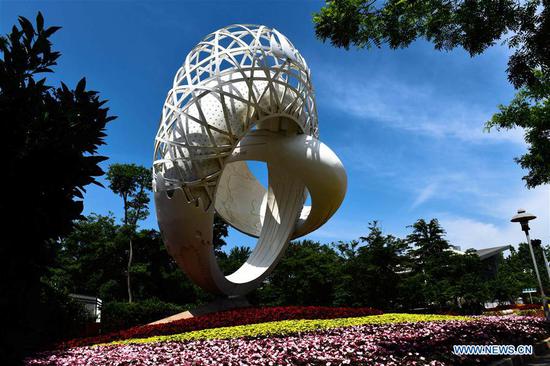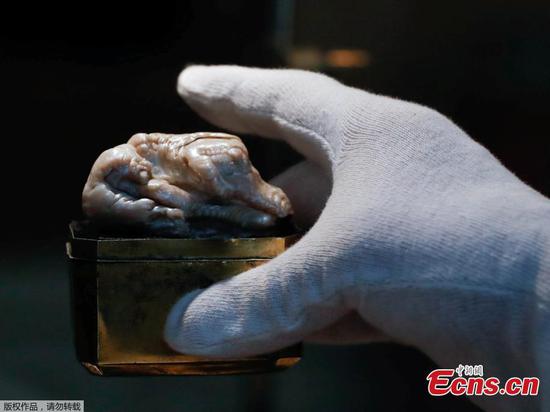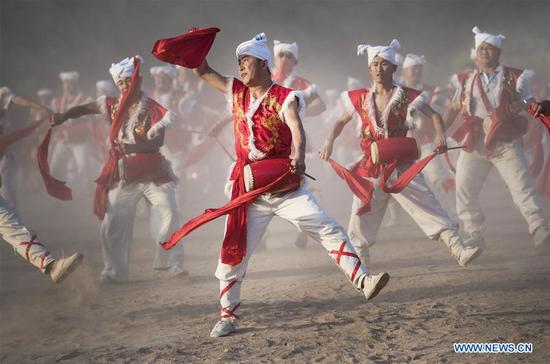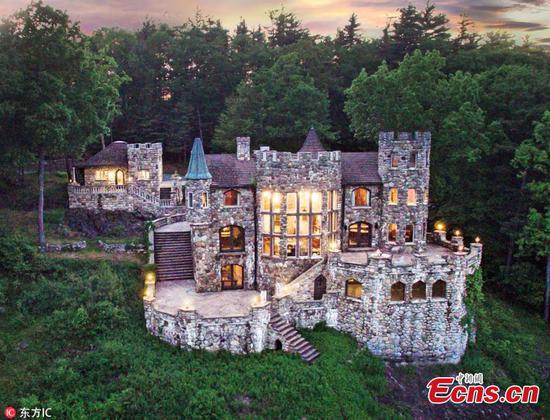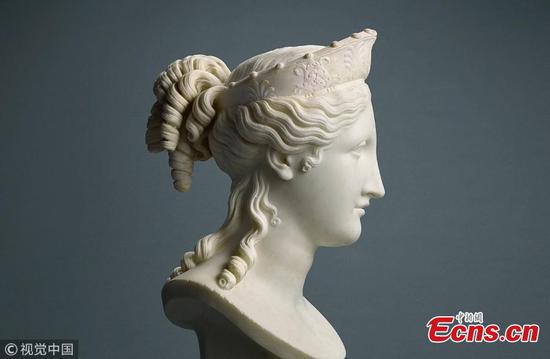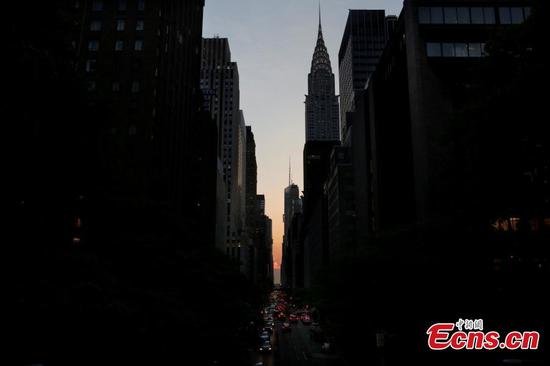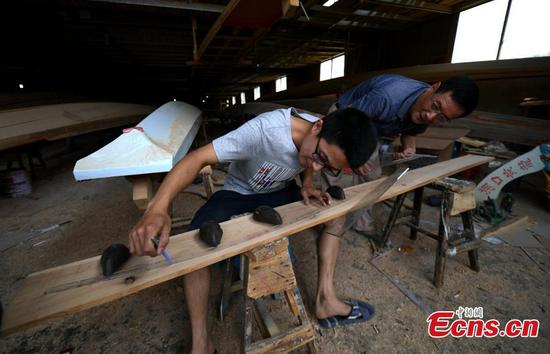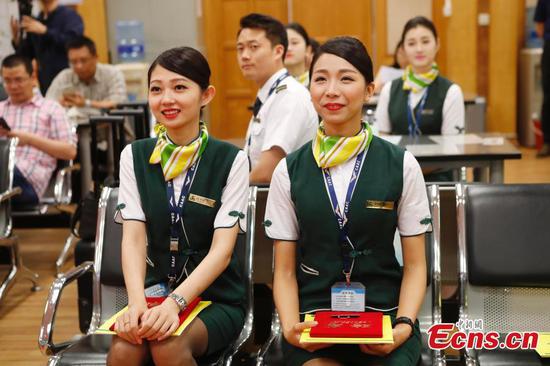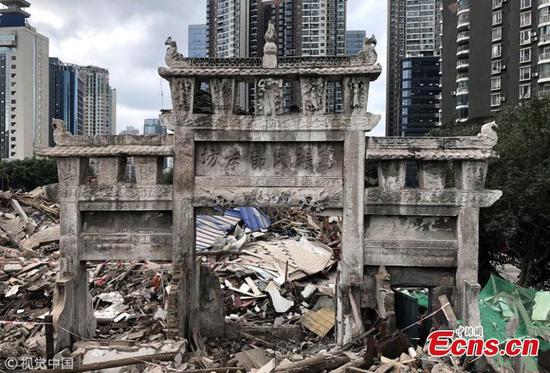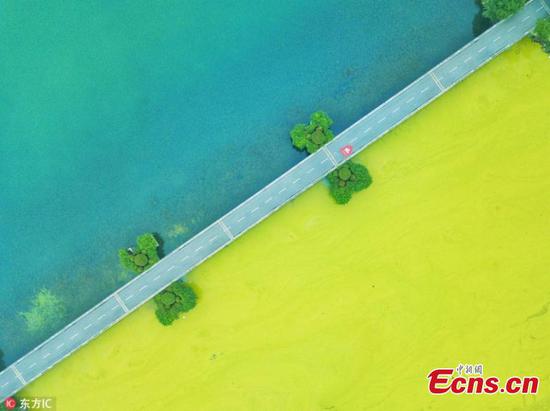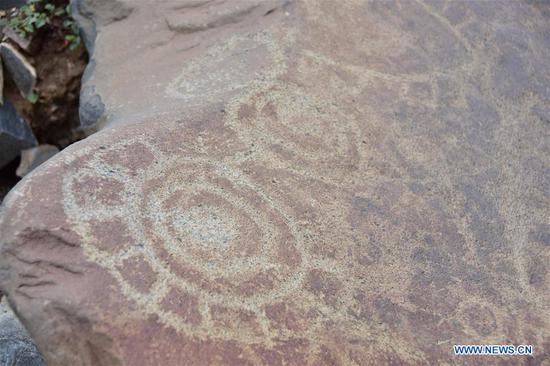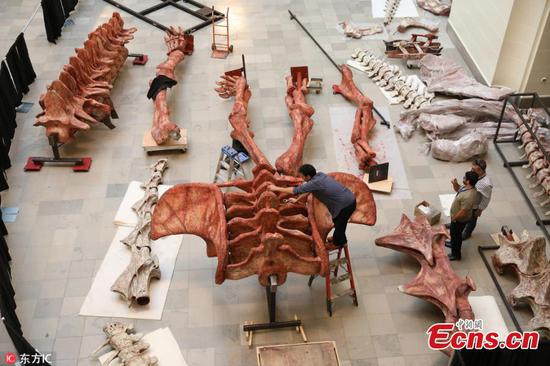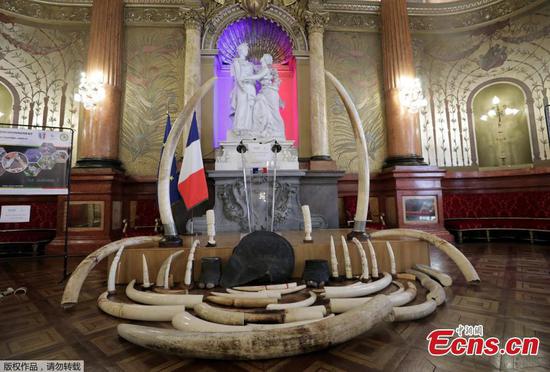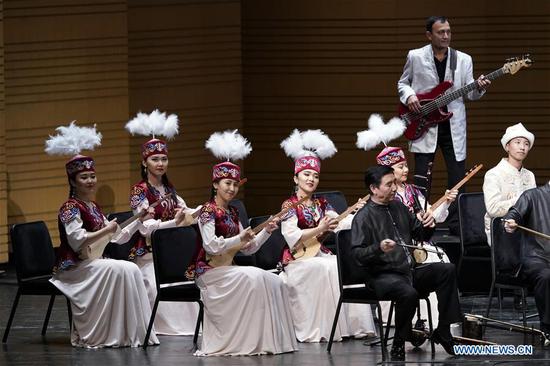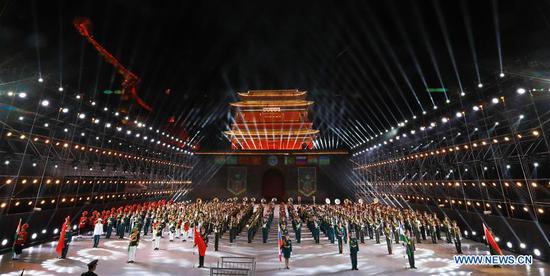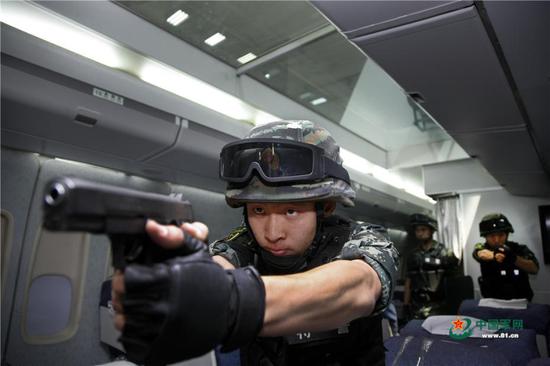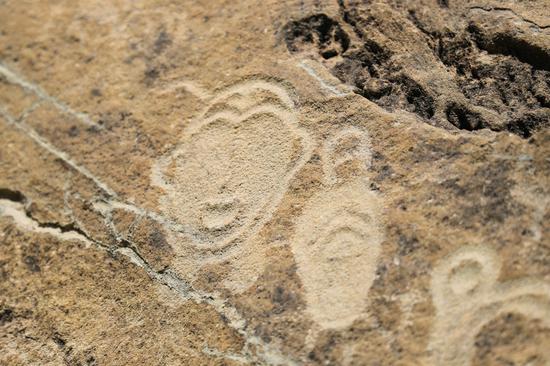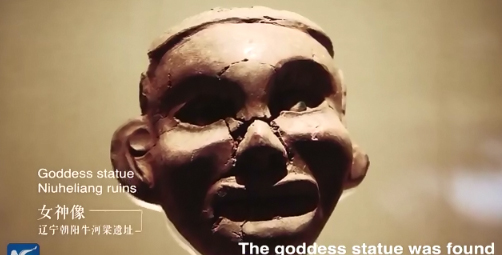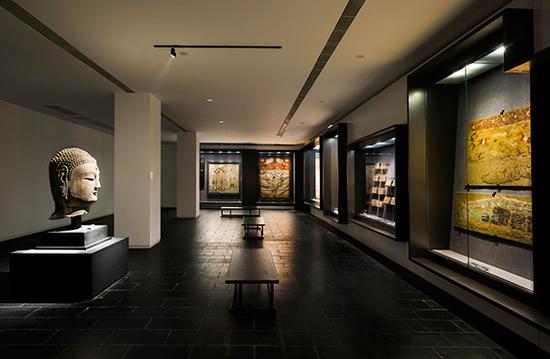
The museum, based in Xi'an, capital of Shaanxi province, is known for its permanent exhibition, which displays ancient Chinese mural paintings throughout history. (Photo provided to China Daily)
Meanwhile, Zhou also set up the Mural Conservation and Restoration Center at the Xi'an Qujiang Museum of Fine Arts, in cooperation with the Shaanxi Provincial Institute of Archaeology, to conserve, research, restore and exhibit ancient murals. And from 2010 to 2017, the center restored 16 murals from the Ordos Bronzeware Museum of Inner Mongolia autonomous region.
"The murals from Ordos are priceless as they contain information about the cultural exchanges between the nomadic people and Western countries," says Zhou, adding that one mural titled Hunting, from the Han Dynasty (202 BC-220 AD), depicts a man sitting in a carriage to go hunting.
"The techniques used in these murals were three-dimensional, rather than the two-dimensional art style of traditional Chinese painting. And it is believed that the three-dimensional technique was brought in by Western travelers," says Zhou.
Speaking about the center, 30-year-old Li Sen, one of three artists who work there says: "Usually it takes months, or sometimes years to restore one mural."
Li, who was born in Yulin, in Shaanxi province, joined the center five years after graduating from Shaanxi Conservation College. And now, along with his team members, they are involved in a project to restore a mural from the Qing Dynasty which measures 4 meters tall by 3 meters wide.
Giving details about his work, Li says: "One of the most used tools (in the restoration process) is the surgical blade. And restoring murals is like being a doctor undertaking surgery. So, when you save a damaged mural you feel contented and excited."
Li also says that he joined the center because of Zhou, who presented lectures about the mural project when Li was a college student.
For Zhou, recounting Chinese history using murals has always been a passion.
He says that Shaanxi province is home to the largest number of murals in China, and that the Shaanxi History Museum had more than 540 murals in the 1990s.









